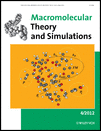
MACROMOLECULAR THEORY AND SIMULATIONS
Scope & Guideline
Transforming Simulations into Scientific Breakthroughs
Introduction
Aims and Scopes
- Theoretical Modeling of Macromolecules:
The journal emphasizes the development and application of theoretical models to describe the behavior of macromolecules, including polymers and composites, under various conditions. - Molecular Dynamics and Simulation Techniques:
A significant focus is placed on molecular dynamics simulations, which are used to study the structural and dynamical properties of macromolecules at an atomic level. - Polymer Processing and Rheology:
Research related to the processing of polymers, including flow behavior and rheological properties, is a core area, helping to understand and optimize industrial applications. - Multiscale Approaches:
The journal promotes the use of multiscale modeling techniques that bridge different levels of understanding, from atomistic to continuum scales, thereby providing comprehensive insights into polymer behavior. - Interdisciplinary Applications:
It encourages studies that apply polymer theory and simulations in interdisciplinary fields, including materials science, biophysics, and nanotechnology, highlighting the versatility of macromolecular research.
Trending and Emerging
- Computational Efficiency in Simulations:
There is a noticeable increase in research focused on enhancing computational efficiency in simulations, which is crucial for handling complex systems and large-scale simulations. - Nanocomposites and Hybrid Materials:
Research on nanocomposites and hybrid materials is trending, reflecting the rising interest in materials that combine polymers with nanoparticles to enhance properties for various applications. - Machine Learning and Statistical Methods:
The integration of machine learning and statistical methods in polymer science is gaining traction, enabling more accurate predictions and analyses of material properties and behaviors. - Environmental and Sustainable Polymers:
Emerging themes include the development of environmentally friendly and sustainable polymer materials, which are increasingly important in the context of global sustainability efforts. - Complex Polymer Architectures:
Research focusing on complex polymer architectures, including branched and network structures, is on the rise, highlighting the need for advanced theoretical frameworks to understand their unique properties.
Declining or Waning
- Experimental Validation:
There appears to be a declining emphasis on experimental validation of theoretical models, as the journal increasingly favors simulation and computational studies over empirical research. - Traditional Polymerization Mechanisms:
Research related to classical polymerization mechanisms is less frequently published, possibly due to the emergence of newer, more complex polymerization methods that are more appealing to researchers. - Basic Polymer Characterization Techniques:
Basic characterization techniques that do not leverage advanced computational methods or theoretical insights are being overshadowed by more sophisticated approaches, indicating a shift towards more complex analyses.
Similar Journals
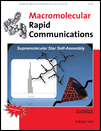
MACROMOLECULAR RAPID COMMUNICATIONS
Connecting Researchers with Cutting-Edge Macromolecular ResearchMACROMOLECULAR RAPID COMMUNICATIONS, published by WILEY-V C H VERLAG GMBH in Germany, is an esteemed journal dedicated to the rapid dissemination of high-quality research in the fields of materials chemistry, organic chemistry, and polymers and plastics. With a remarkable 2023 impact factor securing its place in the prestigious Q1 category across three key disciplines, the journal ranks impressively within the top quartiles of the Scopus metrics, standing at 36th in organic chemistry and 35th in polymers and plastics. Although the journal does not offer open access options, its informative depth and innovative research make it an invaluable resource for researchers, professionals, and students seeking to stay abreast of the latest developments in macromolecular science. Covering a broad spectrum of topics from fundamental research to applications, MACROMOLECULAR RAPID COMMUNICATIONS aims to foster collaboration and inspire further advancements within the scientific community.
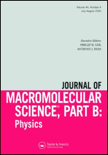
Journal of Macromolecular Science Part B-Physics
Exploring the Intersection of Physics and ChemistryThe Journal of Macromolecular Science Part B-Physics, published by Taylor & Francis Inc, is a critical platform for advancing knowledge in the realms of macromolecular science and interdisciplinary research at the intersection of physics, chemistry, and materials science. With an ISSN of 0022-2348 and E-ISSN of 1525-609X, this journal has been a cornerstone of scientific discourse since its inception in 1967, continuing to offer invaluable insights and innovative findings through to 2024. The journal holds a Q3 ranking across several disciplines, including Chemistry (miscellaneous), Condensed Matter Physics, Materials Chemistry, and Polymers and Plastics, reflecting its relevance and importance within the scientific community. Although it does not support open access, the rigor of its peer-review process ensures that published articles meet the highest standards of scientific excellence. Researchers, professionals, and students alike will find the journal an essential resource for the latest trends and discoveries in macromolecular physics, aiding in both academic pursuits and practical applications in material design and analysis.
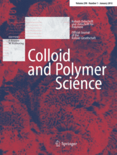
COLLOID AND POLYMER SCIENCE
Exploring the Interplay of Colloids and PolymersCOLLOID AND POLYMER SCIENCE is a prestigious peer-reviewed journal published by SPRINGER that serves as a vital resource for researchers, professionals, and students in the fields of Colloid and Surface Chemistry, Materials Chemistry, and Physical and Theoretical Chemistry. With ISSN 0303-402X and E-ISSN 1435-1536, the journal has established itself as a significant contributor to the scientific community since its inception in 1974, continuously providing valuable insights into the dynamic interplay between colloids and polymers. The journal is recognized for its rigorous quality, reflected in its Quartile rankings; it stands in Q3 for Colloid and Surface Chemistry and Physical and Theoretical Chemistry, and Q2 for Materials Chemistry and Polymers and Plastics in 2023. COLLOID AND POLYMER SCIENCE is an important platform for disseminating high-impact research that addresses fundamental and applied aspects of these critical fields, enhancing our understanding of material interactions and fostering innovations. The journal operates under traditional subscription models, ensuring that optimal academic rigor is maintained. With a strong emphasis on interdisciplinary studies, it encourages contributions that bridge gaps between theory and application, making it an essential reading for those aspiring to excel in the diverse world of materials science.

POLYMER BULLETIN
Exploring the Frontiers of Polymer SciencePOLYMER BULLETIN is a prominent journal in the field of polymer science, published by SPRINGER in Germany. Established in 1978, this peer-reviewed journal focuses on the latest research and developments in polymer chemistry, materials science, and condensed matter physics, boasting a commendable impact factor indicative of its rigorous academic standards. With a Q2 ranking in multiple categories including Chemistry (Miscellaneous), Condensed Matter Physics, Materials Chemistry, and Polymers and Plastics, POLYMER BULLETIN serves as an essential resource for researchers, professionals, and students aiming to stay abreast of innovative findings and methodologies within these interdisciplinary landscapes. Although the journal does not currently offer open access, it provides invaluable insights and data that significantly contribute to the advancement of polymer science. For more information and to access published articles, visit the journal's page on the Springer website.

POLYMER-KOREA
Exploring the Future of Materials ChemistryPOLYMER-KOREA, an esteemed publication by the POLYMER SOC KOREA, serves as a vital platform for disseminating groundbreaking research in the domains of Chemical Engineering, Materials Chemistry, and Polymers and Plastics. Founded in 1996, this journal aims to bridge the gap between academic inquiry and industrial application, fostering innovation in polymer science. With an ISSN of 0379-153X and an E-ISSN of 2234-8077, POLYMER-KOREA provides a rigorous peer-reviewed environment, although it does not currently offer open access options. Based in Seoul, South Korea, and slated for converged years up to 2024, the journal is indexed in Scopus and has been ranked in the 2023 Q4 category in its respective fields, highlighting its niche yet competitive position within the academic community. Researchers, professionals, and students alike will find the journal an invaluable resource, honing in on critical advancements and fostering collaborative discussion within the spectrum of polymer science.
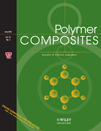
POLYMER COMPOSITES
Pioneering Discoveries in Polymer CompositesPOLYMER COMPOSITES, published by WILEY, is a leading journal dedicated to advancing the fields of materials science and engineering through the exploration of polymer composite materials. With its foundation dating back to 1980, this esteemed journal has continuously provided a platform for researchers to publish high-quality studies and innovative methodologies in areas such as ceramics, composites, and miscellaneous chemistry. Ranked in the prestigious Q1 quartile for sectors like Polymers and Plastics as well as Materials Chemistry, POLYMER COMPOSITES stands significant within the academic community, holding a notable impact factor that reflects its influence. The journal encompasses a comprehensive range of topics, making it essential reading for professionals, researchers, and students aiming to stay at the forefront of developments in polymer science and composite technologies. Although it does not currently offer Open Access, readers can access its impactful publications through institutional or individual subscriptions, contributing to ongoing advancements in the field and facilitating the exchange of valuable knowledge among scientists and engineers worldwide.

Macromolecular Reaction Engineering
Innovating Macromolecular Engineering for TomorrowMacromolecular Reaction Engineering is a leading academic journal published by WILEY-V C H VERLAG GMBH, dedicated to advancing the field of chemical and polymer engineering. Established in 2008, this journal focuses on innovative research and developments in macromolecular chemistry, highlighting the intricate processes involved in polymer reactions and engineering applications. With an ISSN of 1862-832X and an E-ISSN of 1862-8338, it serves as an essential resource for researchers, professionals, and students seeking insightful contributions in its diverse category quartiles, which include Q3 rankings in Chemical Engineering, Chemistry, and Polymers and Plastics as of 2023. Although it currently does not offer Open Access options, the journal is committed to publishing high-quality studies that align with current industrial and academic standards, promoting knowledge exchange in the field. By continuously evolving its scope, Macromolecular Reaction Engineering plays a pivotal role in shaping the future of macromolecular research and engineering practices.

JOURNAL OF POLYMER RESEARCH
Fostering Knowledge in Materials and Organic ChemistryJOURNAL OF POLYMER RESEARCH is a leading peer-reviewed journal published by SPRINGER, specializing in the dynamic fields of polymer science, materials chemistry, and organic chemistry. Operating since 1994, this esteemed journal has consistently delivered high-quality research articles that illuminate the latest advancements and innovations in polymer technology. With an increasing impact factor and placed in the Q2 category for both Materials Chemistry and Polymers and Plastics, it stands as a valuable resource for researchers, professionals, and students seeking cutting-edge knowledge in these areas. The journal is indexed in Scopus, highlighting its significance in the academic community, with notable rankings in Materials Science and Organic Chemistry. While it does not currently offer open access options, the meticulous selection of research and thorough peer-review process ensures each article's contribution to the field is both robust and impactful. Researchers aiming to expand their understanding and engage with pioneering studies will find JOURNAL OF POLYMER RESEARCH an indispensable platform.
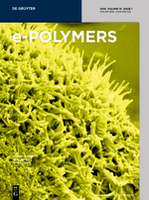
E-POLYMERS
Advancing Polymer Science for a Sustainable FutureE-Polymers, an esteemed journal published by De Gruyter Poland Sp. z o.o., serves as a vital platform for advancing knowledge in the fields of chemical engineering, polymer science, and theoretical chemistry. With its Open Access policy since 2019, researchers from around the globe can freely access and disseminate groundbreaking findings that span the convergence of diverse disciplines, making it an indispensable resource for both academia and industry. The journal is recognized for its significant impact, reflected in its Q2 ranking in Chemical Engineering, Physical and Theoretical Chemistry, and Polymers and Plastics categories in 2023. Its impressive Scopus rankings further solidify its position, showcasing a percentile rank of 70th and above across major categories. With a publication history extending from 2001 to 2024, E-Polymers continually addresses pressing challenges within the polymer research community, fostering innovation and collaboration among researchers, professionals, and students eager to contribute to the evolving landscape of materials science.

ACTA POLYMERICA SINICA
Advancing Polymer Science Through Rigorous ResearchACTA POLYMERICA SINICA is a distinguished journal published by SCIENCE PRESS, specializing in the multifaceted disciplines of Chemical Engineering, Chemistry, and Polymers and Plastics. Established in 1996, this peer-reviewed journal provides a critical platform for the dissemination of cutting-edge research and advancements within these fields, promoting innovation and knowledge-sharing among researchers and professionals globally. With its presence in the highly competitive Q3 quartile rankings as of 2023, the journal demonstrates a commitment to maintaining rigorous academic standards while supporting the evolving landscape of polymer science. Operating from Beijing, China, the journal caters to a broad readership and emphasizes the importance of interdisciplinary collaboration in addressing contemporary challenges in material science. Although it does not offer open access, ACTA POLYMERICA SINICA remains a vital resource for scholars seeking to enhance their understanding and contribute valuable insights to the field.